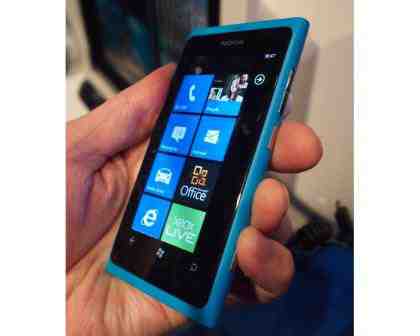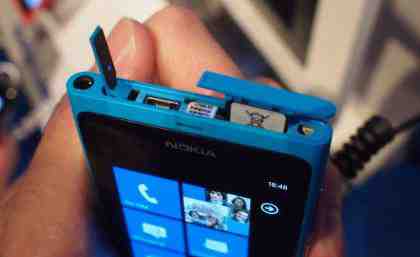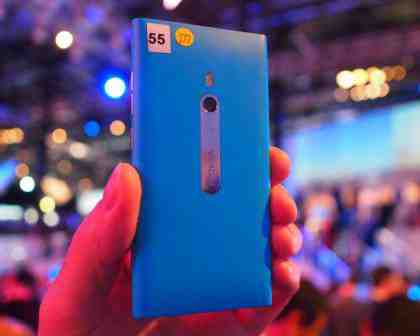Today at Nokia World 2011, Nokia officially unveiled its first Windows Phone-based handsets. Long-expected since its strategic partnership with Microsoft was announced back in February, the Nokia Lumia 800 and Nokia Lumia 710 may not have surprised, but they certainly impressed.
We've been hearing rumours about such handsets for ages, under the Nokia Sea-ray codename. Today, we got hands-on time with both new smartphones on the show floor:
LUMIA 800
The Nokia Lumia 800 is the premium handset of the pair. It has a 3.7in AMOLED display that appears to sit directly under your fingertip, rather than tucked away behind a layer of glass – we’d worry about how damage-proof it was but then Nokia has a great reputation for well-engineered and durable handsets. The display's 800x480 resolution is the same as other recent Windows Phone handsets.

The screen segues seamlessly into what Nokia describes as a ‘single piece injection moulded polycarbonate shell,’ which it also claimed was a better choice for wireless reception. The handset measures 117x61x12mm, and so isn’t the thinnest we've seen by far, it weighs a fairly typical 142g.
It certainly feels great in the hand, though, with the smooth outer shell proving easy and comfortable to grasp. It's available in Cyan, Magenta and Black, so there are some fun options for those who are bored of the usual monotone shades. Those colours are matched to onscreen colours used in Windows Phone, for a smart-looking integrated appearance.
Nokia doesn’t seem to be getting into a specification battle with other handset manufacturers. As with all current Windows Phone handsets, there's no dual-core processor, so no surprise there; however, the Qualcomm MSM8255 chip does run at a rapid 1.4GHz. The Windows Phone interface was incredibly responsive, with no lag to our inputs or little delay when launching apps.

The SIM slot and USB port are hidden away under flaps on top of the phone
There's only 512MB of program memory, compared to 1GB on most high-end Android handsets, but again this is normal for Windows Phone devices to date. You could argue that the operating system has so much integrated into it, that installing lots of apps is unnecessary - or more critically that compared to other OS's there aren't that many Windows Phone apps available anyway.

The camera uses an F2.2 lens, and first impressions were good
The eight-megapixel camera produced well-balanced results on the show floor, but we couldn't get an internet connection to send ourselves the results. It only shoots 720p video, though we didn't get a chance to test this sufficiently to comment. There's 16GB of built-in memory for storing music, photos and videos, with no memory card slot (again as with other Windows handsets).
